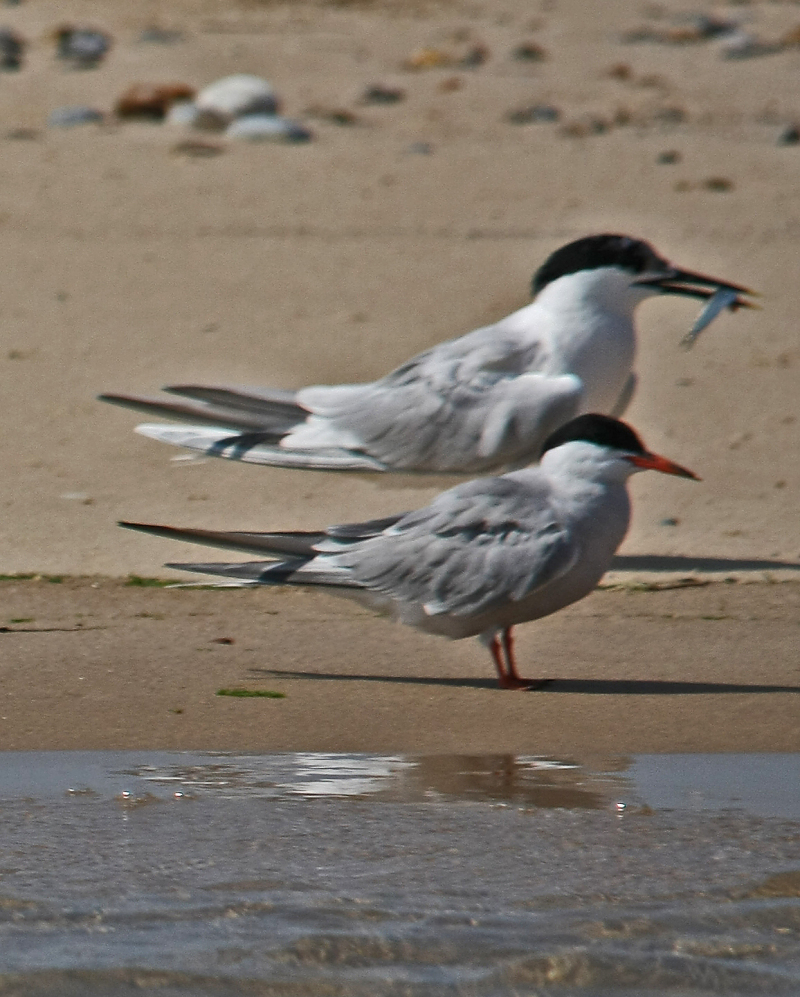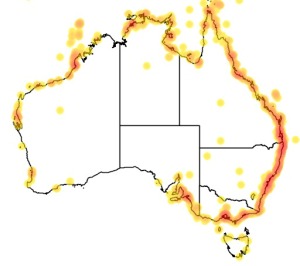Colours
Distinguishing features
Breeding adults have pale grey upperparts, very pale grey underparts, a black cap, orange-red legs, and a narrow pointed bill that can be mostly red with a black tip, or all black, depending on the subspecies.
Its upperwings are pale grey, but as the summer wears on, the dark feather shafts of the outer flight feathers become exposed, and a grey wedge appears on the wings. The rump and tail are white, and on a standing bird the long tail extends no further than the folded wingtips. There are no significant differences between the sexes.
In non-breeding adults the forehead and underparts become white, the bill is all black or black with a red base, and the legs are dark red or black. The upperwings have an obvious dark area at the front edge of the wing, the carpal bar.
Juveniles have pale grey upperwings with a dark carpal bar. The crown and nape are brown, and the forehead is ginger, wearing to white by autumn. The upperparts are ginger with brown and white scaling, and the tail lacks the adult's long outer feathers.
Birds in their first post-juvenile plumage, which normally remain in their wintering areas, resemble the non-breeding adult, but have a duskier crown, dark carpal bar, and often very worn plumage. By their second year, most young terns are either indistinguishable from adults, or show only minor differences such as a darker bill or white forehead. (Wikipedia)
Size
- From 31 cm to 35 cm (Length of specimen)
Weight
- From 0.11 kg to 0.14 kg
Wingspan
- From 77 cm to 98 cm
Synonyms
Distribution
Distribution and habitat preferences
Most populations of the Common Tern are strongly migratory, wintering south of their temperate and subarctic Northern Hemisphere breeding ranges. (Wikipedia)
Diet
It feeds by plunge-diving for fish, from a height of 1–6 m , either in the sea or in freshwater lakes and large rivers. The bird may submerge for a second or so, but to no more than 50 cm below the surface. When seeking fish, this tern flies head-down and with its bill held vertically. It may circle or hover before diving, and then plunges directly into the water. (Wikipedia)
Web resources
References
- Simpson, K., N. Day and P. Trusler (2004). Field Guide to Birds of Australia: 7th Edition Penguin Group (Australia), Camberwell, Victoria.
- Smith, G.C. (1987). The birds of Eagle Island, a tropical sand cay on the northern Great Barrier Reef, Australia, The Sunbird, 17(1): 1-11. LIRS catalog number 245.




